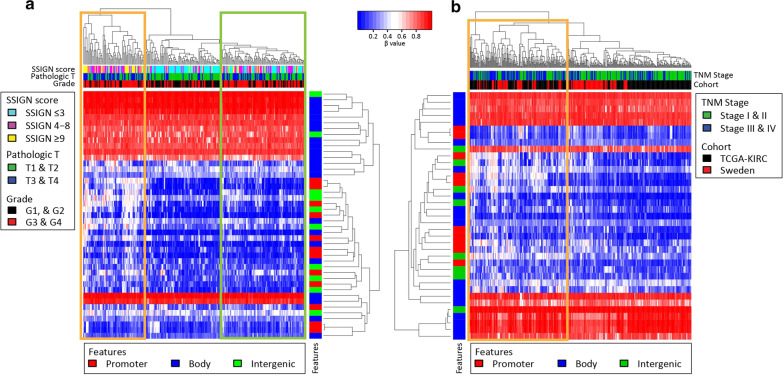Fig. 6.
Heatmap and hierarchical clustering of ‘all-comer’ ccRCC samples using a subset of extreme change CpGs. a Heatmap showing supervised hierarchical clustering of KIRC ccRCC samples (n = 252) driven by methylation beta values at the 43 CpGs from analysis presented in Fig. 4c. Color bars beneath the column dendrogram represent, from top to bottom: SSIGN score, pathologic T stage, and cancer grade. SSIGN scores are categorically divided into 3 groups: ≤ 3, 4–8, and ≥ 9. Pathologic T stages are divided into low (T1 and T2) and high (T3 and T4) stages. Cancer grades are divided into low (G1, and G2), and high (G3 and G4). The color bar next to the row dendrogram indicates the genomic feature. In panel (a), when examining 43 CpGs, poor outcome tumors form two clusters: hypermethylated (orange box) and intermediately methylated (green box), which show a significant over representation (p < 0.01) of more aggressive tumors (higher SSIGN scores, more aggressive pathologic T status, and cancer grade). b Heatmap showing supervised hierarchical clustering of a combination of KIRC (n = 252) and the Swedish cohort (n = 132) ccRCC samples driven by methylation beta values at the 37/43 CpGs from analysis presented in Fig. 4c. Color bars beneath the column dendrogram represent, from top to bottom: TNM stage, and cohort from which the sample originates. TNM stages are divided into low (I and II) and high (III, IV) stages. The color bar next to the row dendrogram indicates the genomic features. When examining 37 CpGs, more aggressive tumors cluster into one distinct group (orange box)

